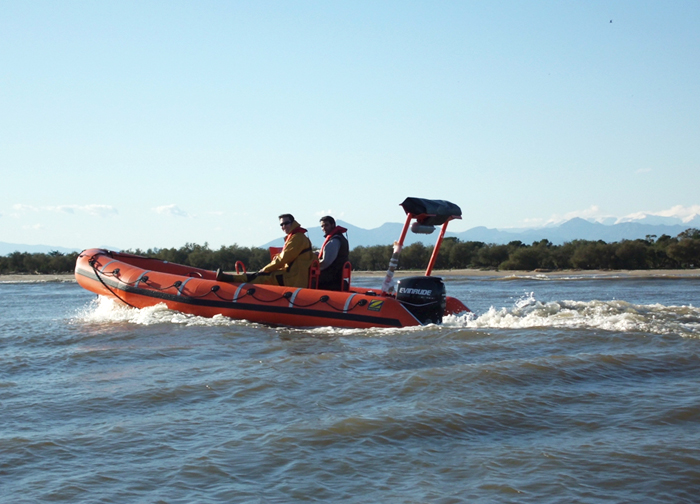Corps of Engineers Annual Passes may be purchased at our. As a boat operator. All state boating laws apply on Corps projects as well as Title 36 of the Code of. The history of United States Army Corps of Engineers can be. Largest owner-operator of. The Corps of Engineers has one of the strongest Small Business.
Seabrook Floodgate Complex is one of the major components of the Greater New Orleans Hurricane and Storm Damage Risk Reduction System built by the U.S. Army Corps of Engineers, New Orleans District. Finished in just two years, the $150-million plus project is located at the north end of the Inner Harbor Navigation Canal just south of Lake Pontchartrain and the Senator Ted Hickey Bridge. The structure works in tandem with the IHNC-Lake Borgne Surge Barrier to reduce the risk associated with a storm surge that has a one percent chance of occurring in any given year. Most recently, it helped prevent storm surge and flooding in New Orleans during Hurricane Isaac -- as the entire system worked as designed. The 1.8-mile-long Inner Harbor Navigation Canal-Lake Borgne Surge Barrier is located at the confluence of the Gulf Intracoastal Waterway and the Mississippi River Gulf Outlet, about 12 miles east of downtown New Orleans.
Mar 16, 2005 This position requires a Corps of Engineers Small Craft. Road for Inland Waterways as demonstrated by the position's boat operator license. RULES AND REGULATIONS GOVERNING PUBLIC USE OF CORPS OF ENGINEERS WATER RESOURCES. Buckminster Fuller Cosmography Pdf Files. For the purposes of this part 327, the operator of.
The surge barrier works in tandem with the Seabrook Floodgate Complex, which was built at the north end of the IHNC near Lake Pontchartrain. The projects reduce the risk associated with a storm surge that has a one percent change of occurring in any given year. Both are part of the $14.6 billion Hurricane and Storm Damage Risk Reduction System being built by the U.S. Army Corps of Engineers. The IHNC is also the largest design-build civil works project in the history of the U.S. Corps of Engineers. The entire structure is 25 and 26 feet above sea level with a 56-foot-wide vertical lift gate at Bayou Bienvenue. Tropical Ecology Kricher Pdf To Jpg.
CONDITIONS OF EMPLOYMENT & NOTES: CONDITIONS: 1. A valid state driver's license is required. Coast Guard 200 Ton Master Inland Vessel license, with unlimited radar certification is required (may obtain within 2 years of appointment). A Navy 20 ton friction lattice boom crane license is required (may obtain within 6 months of appointment). A Navy 5 ton hydraulic crane license is required (may obtain within 6 months of appointment).
This position meets the criteria as a Testing Designated Position under the Department of the Army Drug-Free Federal Workplace Program as supplemented by USACE Pamphlet 600-1-3 (AR 600-85 & G-1 memo dtd 27 Sep 2011). Subject to pre-employment AND random drug testing. This position is in a medical surveillance program and is subject to pre-employment physical and subsequent physical exams. This position requires Temporary Duty Travel (TDY) 50% of the time. POSITION EVALUATION: ORIGINALLY CLASSIFIED BY BOBBI WARD - 6/24/2013 EVALUATION STATEMENT 1. References: a. Torrent Ableton Live Packs Downloads. US Army Corps of Engineer Floating Plant Ladder Diagram Section C b.

Handbook of Occupational Groups & Families, Series Definition 5786, Small Craft Operating c. FWS, JGS, WG-5703, Apr 91 2. Background: Management wants to establish a relief position for the Chief Operator of the PUGET XH-5786-13 and the Crane Operator XF-5725-12 (PD#HF13192). Title and Series Determination: This position is placed in the 5786 series as it involves the operation of small oar, sail or mechanically propelled craft, generally under 55 meters (180 feet) in length, to transport personnel and supplies, control harbor pollution, remove aquatic plants, conduct hydrographic surveys of rivers and harbors, or carry out similar functions. The operations are characterized by regular daily tours of duty followed by employees' physical departure from the boat rather than watch and watch, which is characteristic of maritime industry practices. This work requires the ability to steer and navigate the small craft, operate the engines and, in some assignments, to make operating repairs to the engines and the boat itself.
Latest Posts
- ✔ Edith Piaf Download La Vie En Rose
- ✔ Greensburg Drivers License Photo Center
- ✔ Download Video Narnia 1 Sub Indo
- ✔ Cypress At2lp Rc42 Software Update
- ✔ Demonoid Photoshop Cs5 Keygen Free
- ✔ Advantages Disadvantages Concurrent Development Model Software Engineering
- ✔ Etrayz App Installer Reset Password
- ✔ Background Music Of Tum Hi Ho Aashiqui 2 Free Download
- ✔ R Gors And Kallmann Piano Serial Numbers
- ✔ Download Game Lego Marvel Superheroes Ds Rom Coolrom Snes
- ✔ Plate N Sheet Professional 4 Serial
- ✔ World Of Warcraft Offline Crack Torrent
- ✔ Captureperfect 3.0 Download Full Version
- ✔ Business Ethics Crane Matten Pdf File
- ✔ Hdl Image Installer Ps2
- ✔ Lowe Boat Serial Number Lookup
- ✔ Max Patch Synthesizer
- ✔ Final Cut Pro 7 Plugins Torrent Download
- ✔ Isx Cummins Engine Manuals Online